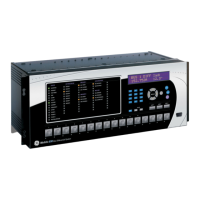B30 Patient Monitor
1-44
Document no. 2044677-001
• effects of anesthesia on heart function
• effects of surgery on heart function
See the “User's Guide” or the “User’s Reference Manual” for electrodes’ positions and other
information.
4.6.3 Pulse oximetry
A pulse oximeter measures the light absorption of blood at two wavelengths, one in the near
infrared (about 940 nm) and the other in the red region (about 660 nm) of the light spectrum.
These wavelengths are emitted by LEDs in the SpO
2
probe, the light is transmitted through
peripheral tissue and is finally detected by a PIN-diode opposite the LEDs in the probe. The
pulse oximeter derives the oxygen saturation (SpO
2
) using an empirically determined
relationship between the relative absorption at the two wavelengths and the arterial oxygen
saturation SaO
2
.
In order to measure the arterial saturation accurately, pulse oximeters use the component of
light absorption giving variations synchronous with heart beat as primary information on the
arterial saturation.
A general limitation of pulse oximetry is that due to the use of only two wavelengths, only two
hemoglobin species can be discriminated by the measurement.
The modern pulse oximeters are empirically calibrated either against fractional saturation
SaO
2
frac;
Formula 1
or against functional saturation SaO
2
func;
Formula 2
Functional saturation is more insensitive to changes of carboxyhemoglobin and
methemoglobin concentrations in blood.
The oxygen saturation percentage SpO
2
measured by the Datex-Ohmeda module is calibrated
against functional saturation SaO
2
func. The advantage of this method is that the accuracy of
SpO
2
measurement relative to SaO
2
func can be maintained even at rather high concentrations
of carboxyhemoglobin in blood. Independent of the calibration method, pulse oximeters are
not able to correctly measure oxygen content of the arterial blood at elevated
carboxyhemoglobin or methemoglobin levels.
Plethysmographic pulse wave
The plethysmographic waveform is derived from the IR signal and reflects the blood pulsation
at the measuring site. Thus the amplitude of the waveform represents the perfusion.
binDyshemogloHbHbO
HbO
fracSaO
2
2
2
++
=
HbHbO
HbO
funcSaO
2
2
2
+
=

